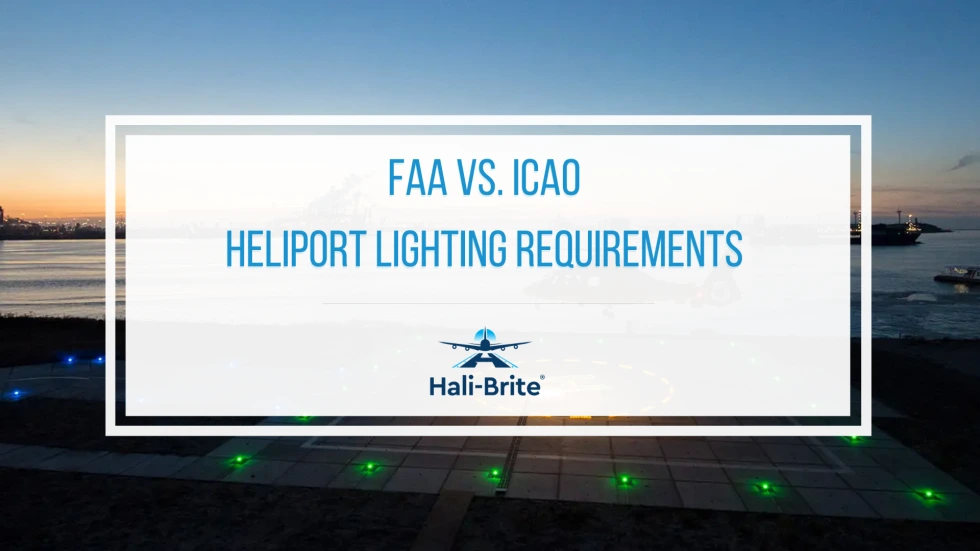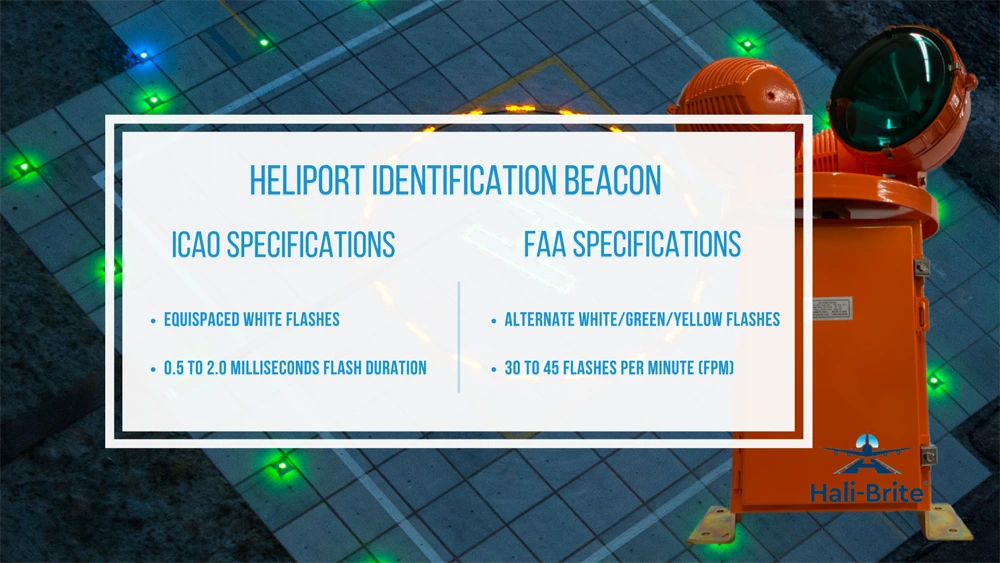The Federal Aviation Administration (FAA) and The International Civil Aviation Organization (ICAO) are aviation authorities that regulate guidelines in all aspects of civil air transport. Airports and heliports adhere to the standards and recommendations set by these organizations to maintain safe aircraft operations.
But what’s the difference between these two?
The ICAO oversees international civil aviation operations. They are responsible for developing aviation standards and providing uniform regulations among their member states. However, the ICAO standards do not supersede the aviation requirements set by a state’s national aviation authority, such as the FAA. The FAA is a government agency that regulates civil aviation procedures within the United States, including air transport operations and airport design requirements. Airports and heliports in the US must comply with the FAA aviation standards to be operational.
Airport and heliport lighting are among the aviation requirements regulated by both ICAO and FAA. Both agencies have provided installation and design guidelines for airport and heliport lighting systems, including the recommended specifications. In this article, you’ll learn the similarities and differences between the ICAO and FAA heliport lighting specifications.
Heliport Lighting System
Any operational heliport must have a heliport lighting system to help pilots navigate and pinpoint locations during night operations. Here are some of the heliport lighting equipment required by the ICAO and FAA for heliports with their recommended specifications:
Flight Path Alignment Lights
The flight path alignment lighting system indicates the available direction of approach and/or departure flight paths.
| ICAO Specifications | FAA Specifications |
|
|
Heliport Identification Beacon
A heliport identification beacon provides visual guidance to pilots, allowing them to locate a heliport, especially at night. Heliport beacons, such as Hali-Brite’s Heli-Port LED Rotating Beacon L-801(H)L, are recognized by pilots through their light flashes.
| ICAO Specifications | FAA Specifications |
|
|
FATO Perimeter Lights
The Final Approach and Takeoff (FATO) is a heliport area where the final approach before landing or taking off is made. The FATO perimeter lights are installed for the pilots to identify the FATO area, especially at night, helping them land safely.
| ICAO Specifications | FAA Specifications |
|
|
TLOF Perimeter Lights
The Touch-down and Lift-Off (TLOF) is the heliport landing and takeoff area. The TLOF is normally located at the center of the FATO and can be identified by its “H” marking. The TLOF perimeter lights enable the pilots to pinpoint the exact area where to land the helicopter.
| ICAO Specifications | FAA Specifications |
|
|
We Provide Your Heliport Lighting Needs
The heliport lighting system is crucial to maintain safe flight operations in heliports. Furthermore, the lighting equipment must meet the ICAO or FAA requirements to guarantee its quality before using it in heliport operations.
We at Hali-Brite have ICAO- and FAA-compliant heliport lighting products that can help provide excellent visibility to your heliport, ensuring safety during flight operations. Call us now at (218) 454-0956 or contact us here.


